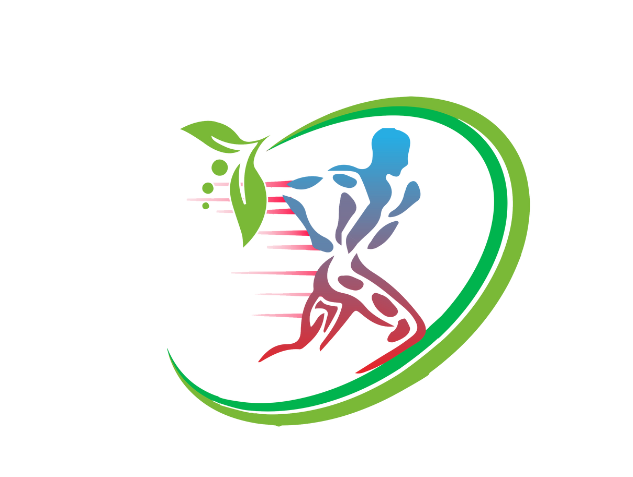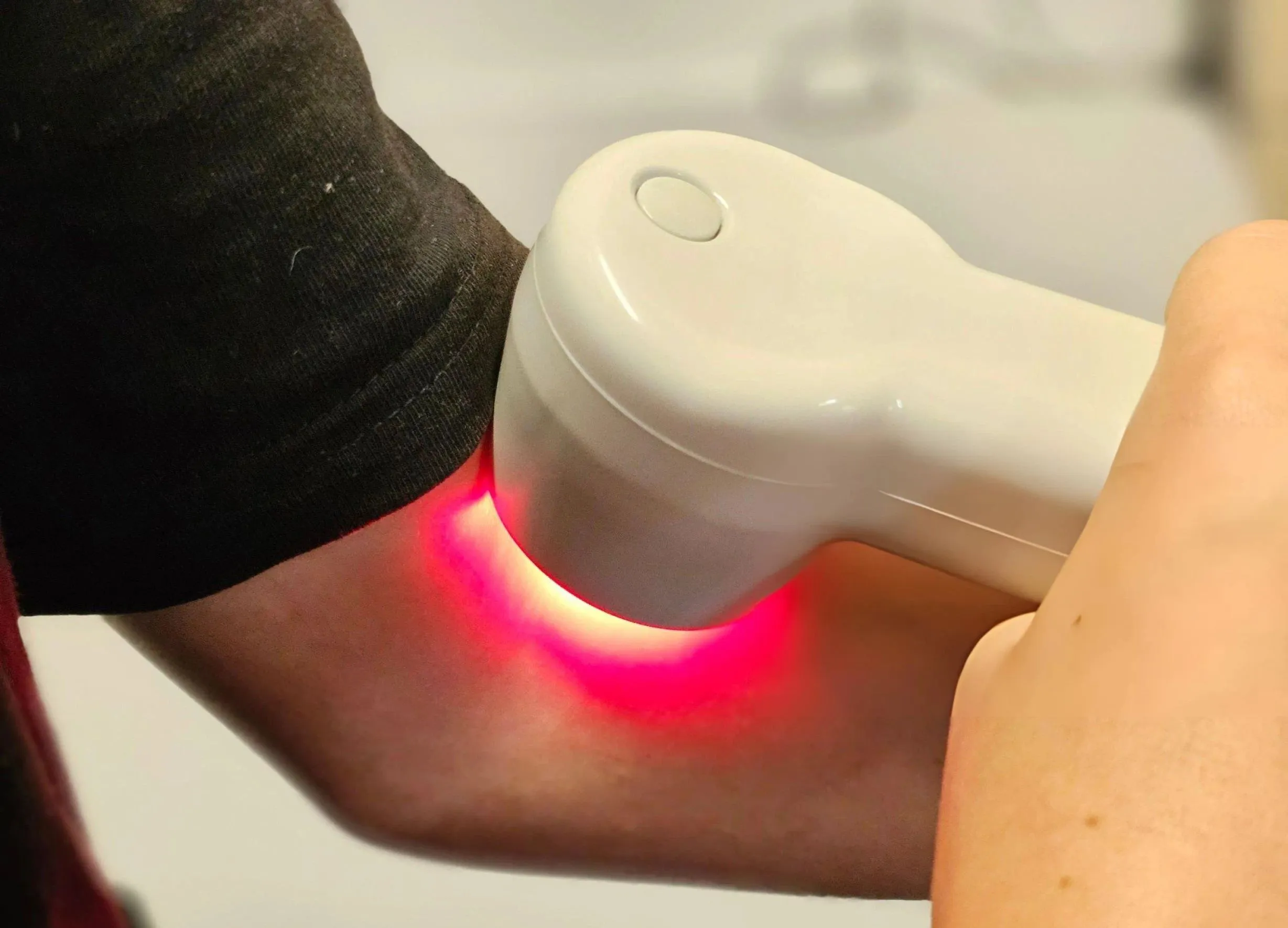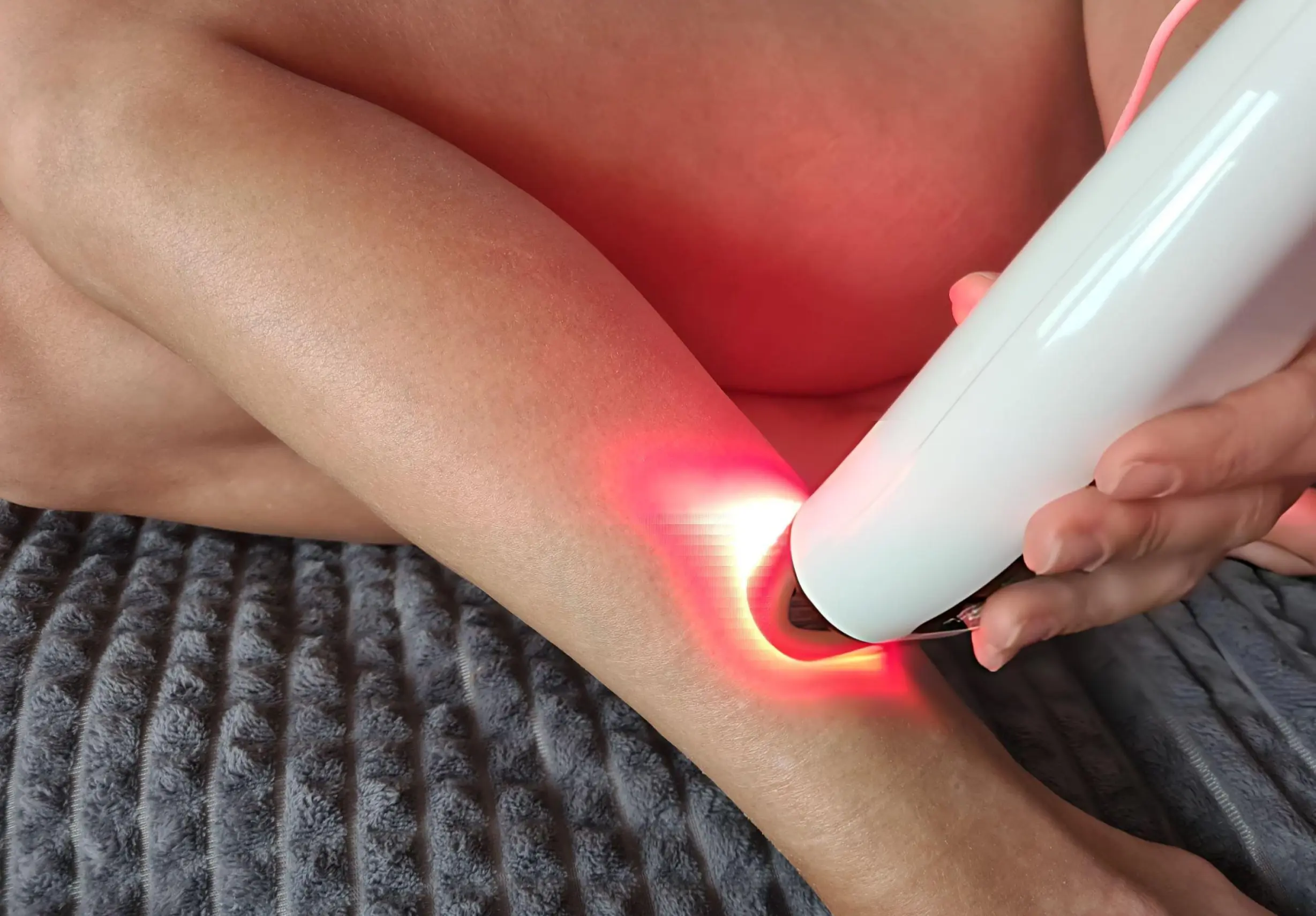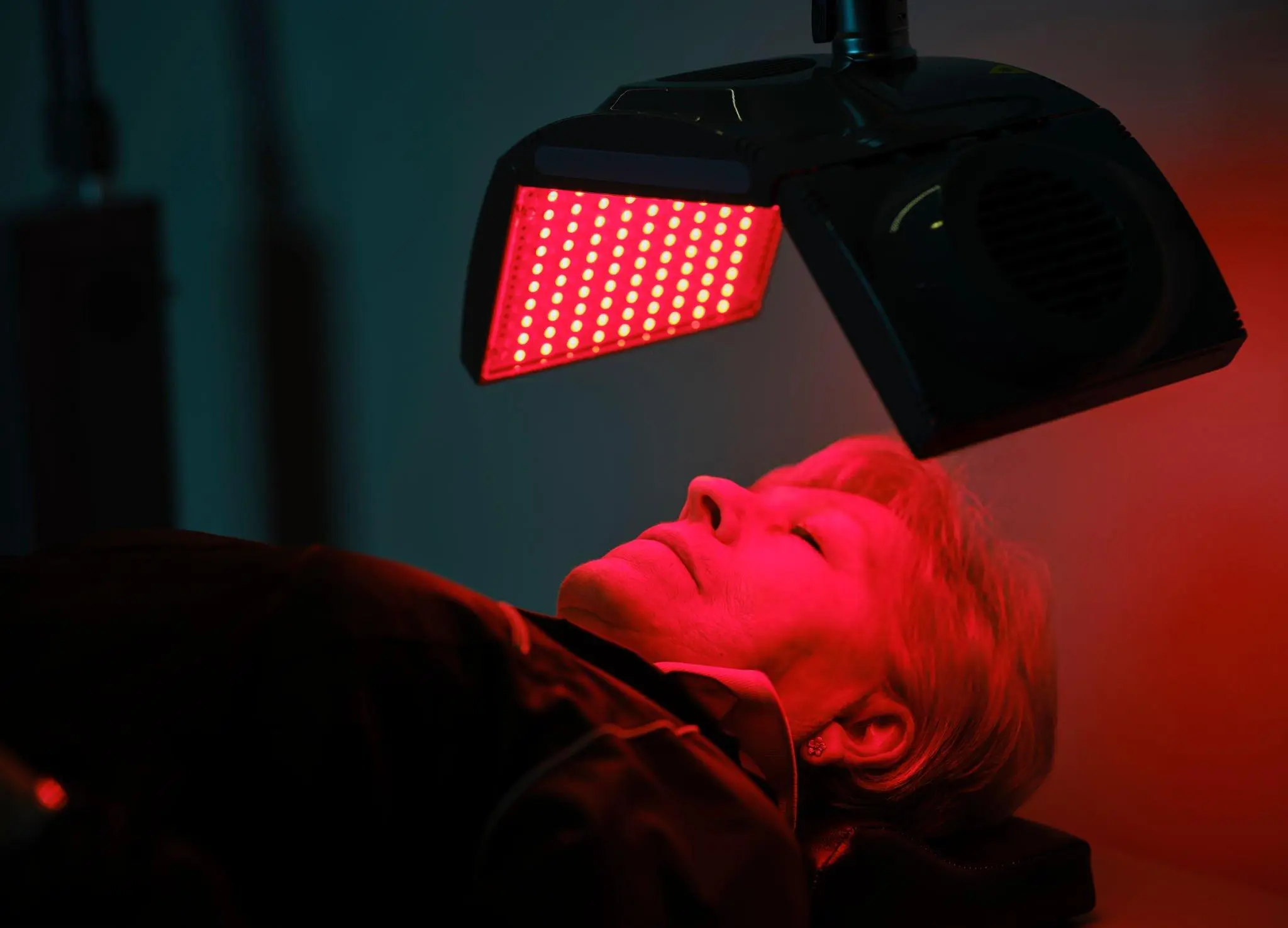Laser therapy is a modern treatment. It helps reduce long-term pain, such as muscle, joint, or nerve pain. It uses light energy to reach the affected areas, speeding up healing and giving fast pain relief. This safe, noninvasive method helps. It lowers swelling, improves blood flow, and repairs damaged tissues. It’s a great option for people with ongoing pain. This article will explain laser therapy. Before trying it, we will cover how it works, its benefits, and key things to know.
Understanding Laser Therapy
Laser therapy, also known as low-level laser or photobiomodulation, is the non-surgical use of an intensity of light to help treat one or more medical conditions. The complete form of the acronym laser stands for Light Amplification by Stimulated Emission of Radiation. This non-surgical treatment procedure helps minimize issues related to pain and inflammation and enhances tissue repair.
How Does Laser Therapy Work?
Laser therapy is partly based on the interaction of the tissues with light energy. The laser light passes through the skin, and the power is absorbed by the cells and, above all, the mitochondria of the cells. This absorption stimulates several biological processes:
- Increased Energy Production: Mitochondria produce more adenosine triphosphate (ATP), vital for energy and tissue repair.
- Enhanced Blood Flow: Laser therapy improves blood circulation to the treated region, supplying the nutrients required for tissue repair.
- Reduced Inflammation: Swelling and inflammation trigger pain, and the treatment will assist in reducing them.
- Pain Relief: Laser treatment may be a good starting point since it influences nerve receptors and reduces patients’ awareness of dangerous stimuli.
Benefits of Full Body Laser Therapy
Full-body laser therapy offers numerous advantages over traditional pain management methods:
Noninvasive Treatment
One of the advantages of laser therapy is that it is a non-invasive procedure. While some medical operations require incisions and usually entail significant post-operation downtime, laser treatment can be delivered quickly and effectively in an outpatient setting. These treatments can be fast, so one is often ready to resume normal activities afterward.
Minimal Side Effects
The side effects of laser therapy, however, are minimal, and in most cases, there are no side effects. This makes it much safer than taking medications that can A cause you harm or B create dependency in you. Some of the reactions commonly reported with drugs are gastrointestinal upset, tiredness, and, in some cases, addiction.
Rapid Recovery
This means patients can quickly tell the changes happening to their bodies within a few laser therapy sessions. Most people find that their wounds heal in a shorter time than with other treatments. This means that when players or athletes want to return to their chosen sport, this mode of therapy will help them recover very fast.
Versatile Applications
It also helps cure various diseases, such as arthritis, sports injuries, and Fibromyalgia. Thus, it is suitable for people with different chronic diseases.
Cost-Effectiveness
However laser therapy can cost more than other treatments in the beginning. This higher cost might erase any savings from using cheaper treatments. So you could spend that money on laser therapy. As a result of the natural pain control that we can achieve, many patients can call it quits regarding medications and doctor visits that they once required periodically.
Diseases Treated by Laser Therapy
Laser treatment is helpful in different health disorders. Some typical applications include:
Arthritis
Arthritis is a reasonably common illness resulting in inflammation and joint pain. Laser therapy may relieve arthritis pain. It might improve blood flow and heal the affected areas, including the joints.
Back Pain
Back pain, significantly lower back pain, is one of the most common health concerns in adults of the present generation. Laser treatment helps to minimize pain arising from severe back deformities by enhancing circulation and minimizing inflammation so that the patient can move and live an everyday life.
Carpal Tunnel Syndrome
The condition results from the median nerve being compressed in the wrist, causing signs such as tingling and numbness. Laser treatment is effective in correcting nerve impingement because it lessens inflammation and improves healing.
Fibromyalgia
Fibromyalgia is a medical condition in which the affected person experiences pains that may be soreness or aching all over their body. Laser therapy is especially effective for this complaint. It can assist in promoting overall functionality in those afflicted with this widespread ailment.
Sports Injuries
Athletes regularly experience pain in their bones, muscles, or ligaments, causing sprain, strain, or tendonitis. Laser treatment of muscles and ligaments improves the healing process for injuries and allows athletes to regain their games faster.
How laser therapy is done
The treatment process for full-body laser therapy typically involves several steps:
Consultation
When a patient is first seen, the doctor will evaluate the patient’s medical background and overall status. After careful checkup your doctor will recommend the number of sessions required and other requirements depending on the patient’s condition.
Preparation
During the session, the patient may be required to undress or remove accessories that partially hinder light penetration.
Laser Application
During the therapy session, the therapist uses a small device called NOVOTHOR. It sends laser light to the areas that the treatment targets. Each session lasts about 5 to 30 minutes, depending on the region’s size and the condition being treated.
Post-Treatment Care
Patients are generally advised on the number of times they should come for subsequent treatments and other treatment procedures that may be useful to them at home once they leave the hospital.
Effectiveness of Laser Therapy
Laser therapy is an effective technique for pain management. Research indicates that laser therapy can significantly reduce pain levels and improve function in patients with various conditions:
- Clinical Studies: Various research studies have shown that patients who undergo LASER treatment may heal 60 percent faster than required for patients receiving traditional therapies.
- Patient Testimonials: It is also interesting to note that most people testify of improved quality of life when they choose complete body laser therapy, complaints of pain, and restricted movement.
The effectiveness of the treatment may depend on several factors, including:
- The Type of Light Used: Different types of light reach tissues differently. Longer wavelengths are better. They can penetrate the body more, targeting areas that need attention.
- Laser Power: Stronger lasers might work faster. But, they are risky. Handle them with care.
- Frequency of Treatments: Therapy usually takes several sessions; some may have recurring illnesses requiring constant care.
Safety Considerations
Complete body laser therapy is generally considered safe when performed by trained professionals; however, some precautions should be observed:
- Avoiding Active Infections: Laser treatment should not be performed on areas with infections or malignancies to avoid worsening these conditions.
- Pregnancy Considerations: Treatment may be harmful to pregnant women, and that is why pregnant women should consult their physicians before undergoing treatment.
- Medication Disclosure: Patients should give information about any medication they are using since some drugs may interfere with the healing or have a bad interaction with lasers.
Frequently Asked Questions (FAQs)
Is laser therapy painful?
Most patients state that laser therapy is painless or only slightly painful during the treatment. The sensation is generally described as a warm, prickly feeling on the skin.
What about frequency: How Many Sessions Will It Take?
The number depends on the patient’s condition, yet typically, an average of 6-8 treatments are required to achieve the most significant outcome.
Can you apply laser treatment when other therapies are also being used?
Yes! Many patients combine laser treatment with other treatments, such as physical therapy or chiropractic care.
How long do results Last?
The outcome may depend on various factors, but several patients get long-term pain reduction after the treatment as prescribed.
Conclusion
Full-body laser treatment offers a relatively new pain management technique for chronic pain sufferers who wish to avoid having an operation or being dependent on pills for life. Due to its healing properties and reduced side effects, this has become the best option for many patients suffering from different ailments.





